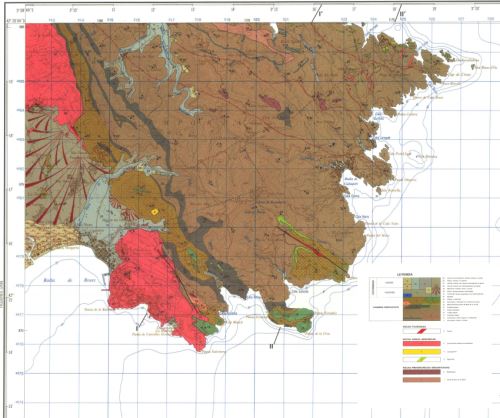Click for a detailed Geological Map. One of the reasons that Cadaqués and the Cap de Creus is so stunning, is its beautiful geology. The rocks here were mashed up when the Pyrenees were formed, and are mostly metamorphic schists which turn a lovely golden colour in the Mediterranean sun.

On top of that, this is one of the wildest spots on the Costa Brava in the winter (Costa Brava means “wild coast “) , and the migmatites and schists have battered and eroded by the Tramuntana wind and a sea that can look as if it is boiling in the strong winds.
(A migmatite is a type of rock that formed under extreme pressure and temperature: a partial melt. Migmatites are halfway between an igneous and metamorphic rock. A schist is a medium grade metaphorphic rock that has been squashed into flakes or slabs. Schist is derived from the Greek meaning “to split”).
Interspersed within this mash of schist is dazzling white blocks of pegmatite- basically molten rock that percolated up through the gaps in the rock at the end of the “orogeny” or mountain building.
The Cap de Creus is a popular destination for Structural Geologists. Because the detail is so clearly exposed in the rocks, thanks to wind and sea erosion, many scientists have mapped the area to determine how exactly the area was deformed. There were several phases of mountain building in the area, and the sequences have been recorded in the structure of the rocks, as the different layers were bent and twisted over each other.